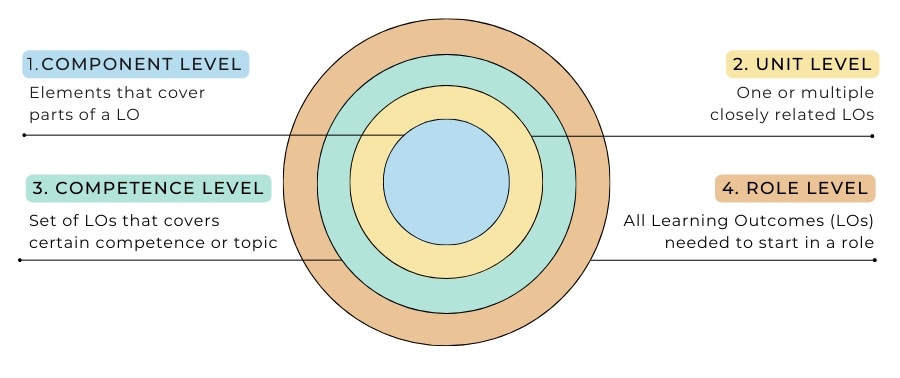The certification framework for software professionals presents four aggregation levels, considering micro-credentials and using European standards like the e-CF, EQF, and ECTS. It includes 190 unit-level, 47 competence-level certifications included under 9 role-level credentials (following ESSA educational profiles). It also lays out possible ways of implementation including:
- Use as a mapping tool
- Issuing of ESSA certifications/digital badges based on the mapped certifications/qualifications
- Issuing by accredited learning providers
- Issuing by assessment providers
- Using a combination of implementation options
DOWNLOAD (PDF)
See also the full mapping of existing professional certifications.
Main results
This certification framework has 4 aggregation levels, namely role level, competence level, unit level and component level. On the highest level, i.e., role level, 9 certifications were defined, corresponding to the 9 educational profiles. The competence level has 47 certifications defined and the unit level includes 190 certifications. These 190 unit-level certifications are the foundational level of the framework. By stacking these unit- and then competence-level certifications, a role-level certification can be achieved. Unit-level certifications can be divided into smaller component-level certifications if the issuer thinks this is effective.

A mapping of professional certifications in the sector to the certifications in this framework resulted in an overview of 103 mapped certifications across 23 issuing organisations.
Looking at the implementation aspects, the results are that, besides describing how the framework could work for students, suppliers of certifications, and educational providers, 5 possible ways of implementation of the framework have been identified.
Conclusions
The certification framework will help the comparability of certifications and has different possible ways of being implemented.
The different aggregation levels and the possible stacking of credentials address the need for micro-credentialing.
The mapping of certifications is an example of how this framework can increase comparability and, together with that, stimulate mobility among software professionals.
Use of this report
This document can be used as the foundation for the implementation of a certification framework. It offers pointers on how to proceed with this important tool.
Photo by George Kedenburg III on Unsplash

